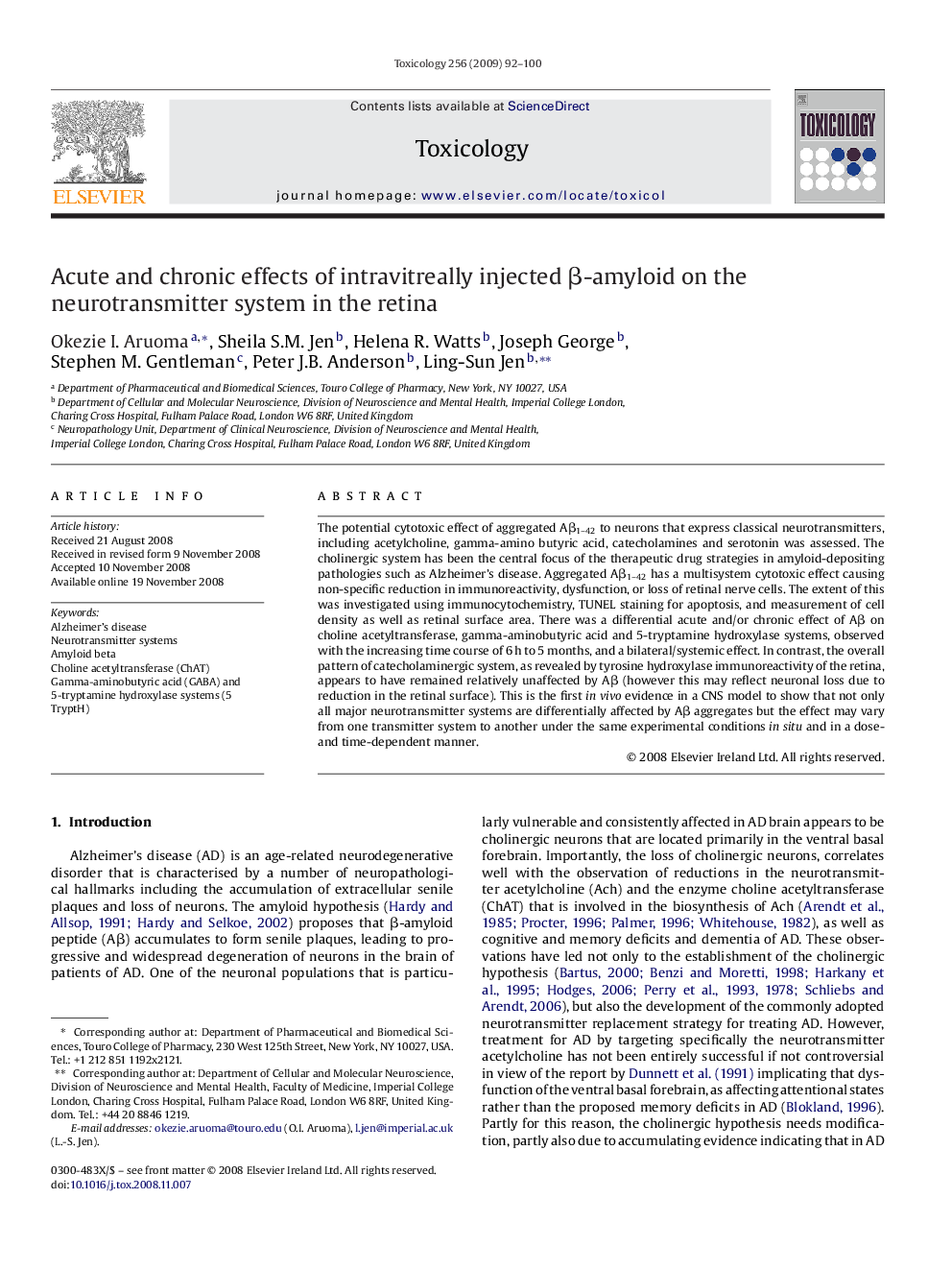| Article ID | Journal | Published Year | Pages | File Type |
|---|---|---|---|---|
| 2596742 | Toxicology | 2009 | 9 Pages |
Abstract
The potential cytotoxic effect of aggregated Aβ1-42 to neurons that express classical neurotransmitters, including acetylcholine, gamma-amino butyric acid, catecholamines and serotonin was assessed. The cholinergic system has been the central focus of the therapeutic drug strategies in amyloid-depositing pathologies such as Alzheimer's disease. Aggregated Aβ1-42 has a multisystem cytotoxic effect causing non-specific reduction in immunoreactivity, dysfunction, or loss of retinal nerve cells. The extent of this was investigated using immunocytochemistry, TUNEL staining for apoptosis, and measurement of cell density as well as retinal surface area. There was a differential acute and/or chronic effect of Aβ on choline acetyltransferase, gamma-aminobutyric acid and 5-tryptamine hydroxylase systems, observed with the increasing time course of 6 h to 5 months, and a bilateral/systemic effect. In contrast, the overall pattern of catecholaminergic system, as revealed by tyrosine hydroxylase immunoreactivity of the retina, appears to have remained relatively unaffected by Aβ (however this may reflect neuronal loss due to reduction in the retinal surface). This is the first in vivo evidence in a CNS model to show that not only all major neurotransmitter systems are differentially affected by Aβ aggregates but the effect may vary from one transmitter system to another under the same experimental conditions in situ and in a dose- and time-dependent manner.
Related Topics
Life Sciences
Environmental Science
Health, Toxicology and Mutagenesis
Authors
Okezie I. Aruoma, Sheila S.M. Jen, Helena R. Watts, Joseph George, Stephen M. Gentleman, Peter J.B. Anderson, Ling-Sun Jen,
